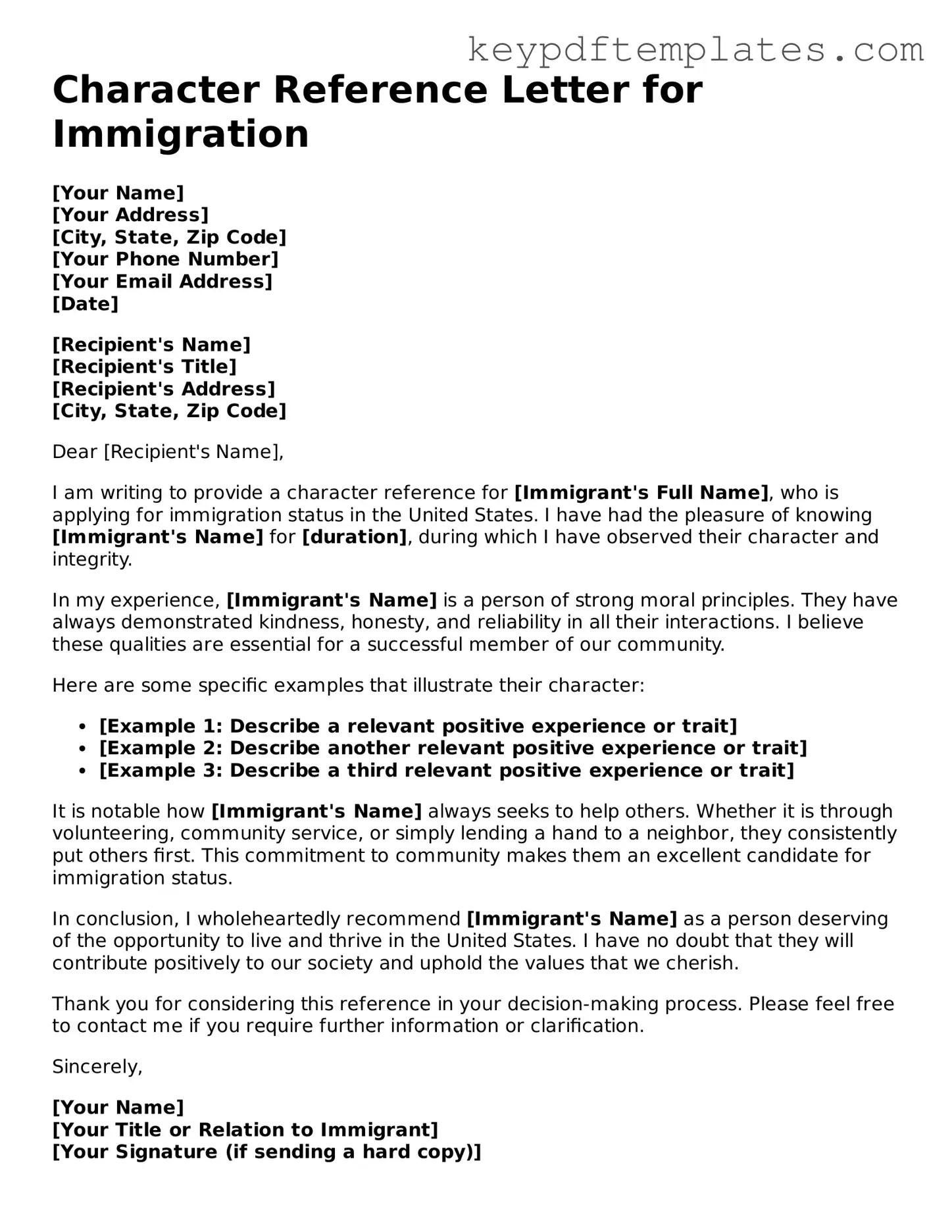Printable Character Reference Letter for Immigration Template
The Character Reference Letter for Immigration is a crucial document that supports an individual's application for immigration by providing insight into their character and contributions to society. This letter, typically written by friends, family, or community members, serves to highlight the applicant's positive attributes and moral standing. It plays a significant role in helping immigration officials assess the individual's suitability for residency or citizenship.
Modify Document Online
